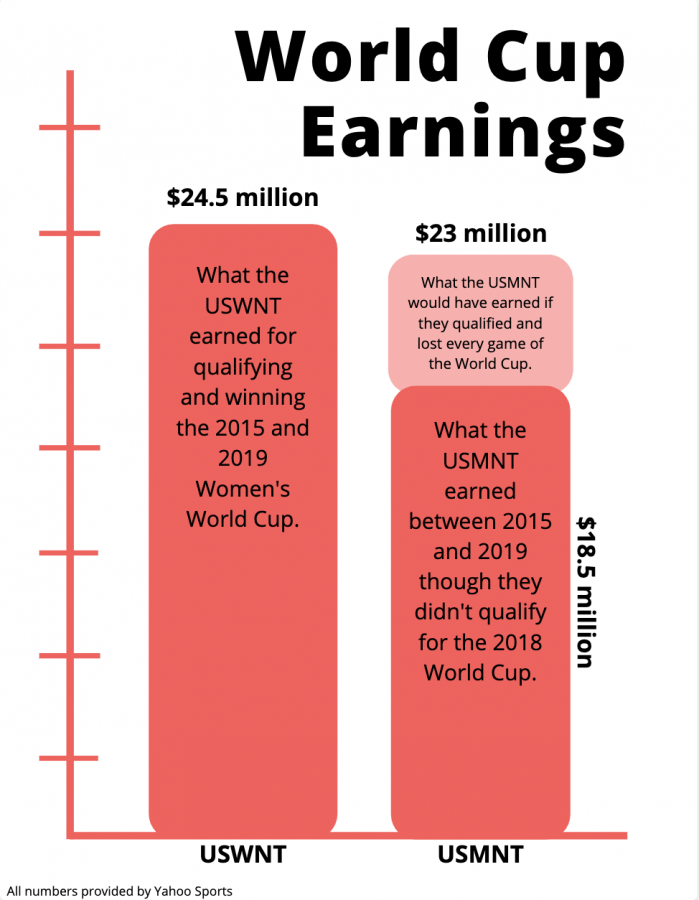Judge partly dismisses the USWNT’s charges against US Soccer in the ongoing wage discrimination case
May 28, 2020
On May 1, 2020, California Federal Judge R. Gary Klauser dismissed two out of the three claims made by the U.S. Women’s National Soccer Team (USWNT) in their ongoing wage discrimination lawsuit against the U.S. Soccer Federation (USSF). Klauser determined that the women earned more than the men in the latest world cup but disregarded the idea that the women’s total salary consists of earnings from domestic and international play while the men’s solely reflects international play.
The lawsuit began on Mar. 8 2019, three months before the 2019 FIFA Women’s World Cup. 28 players of the USWNT filed a 25-page gender discrimination lawsuit under the Equal Pay Act and Title VII of the Civil Rights Act against the USSF, claiming they were paid less for equal work and demanding a total of $66 million be paid to current and previous athletes to compensate for the lower wages. The USSF fought back saying the men’s and women’s teams have agreed to different collective bargaining agreements and pay structures.
In his recent decision, Judge Klausner wrote that the players “have not demonstrated a triable issue that WNT players are paid less than MNT players,” thus rejecting the claim that the USWNT faces pay discrimination.
Judge Klausner’s reasoning for not deeming the case “triable” lies in the USWNT’s claims. They cited the different pay structure as the reason they were paid less in the latest world cup. The women work with a base salary to which bonuses are added to if they keep winning while the men’s contract pays them for each roster they make whether it be for the MLS or the USMNT roster they meet. The women claimed that their salary cap was far less than the men’s and cited this as discrimination.
Judge Klausner explained that these claims were based on what the women could potentially earn as opposed to what they actually earned. In actuality, according to a financial analysis submitted by the USSF, the women earned $24.5 million between 2015 and 2019 while the men earned $18.5 million (Yahoo Sports).
These numbers prove the women were paid more but solely because the men’s team failed to qualify for the 2018 World Cup while the women’s team qualified and won the 2015 and 2019 Women’s World Cup. Had the men’s team qualified for the tournament, they would have been paid more than the women though they placed first for two World Cup’s back to back..
The USWNT’s attorney, Jefferey Kessler, did not use this argument but instead refuted these claims by saying that “these comparisons are legally irrelevant” because total compensation doesn’t mean the women were paid fairly for each game they played. However, the financial breakdown furthers that the women were paid on average $236,952 per game, a higher salary than the men’s at $212,639.
The women team’s salary is only higher because their salary also includes their earnings from domestic soccer in the National Women’s Soccer League (NWSL), which they are required to play under their international contract. However, if solely the international salaries of both teams are compared, the USWNT’s average salary is far less than that of the USMNT.
Though the players insisted these numbers were false, the USSF provided enough evidence for Klausner to dismiss the claims of gender discrimination based on pay. The players’ other charges include less ideal playing and traveling conditions including hotel rooms, flights and training situations. Klausner did not dismiss these claims and they will be discussed in court.
The trial to discuss these charges is now rescheduled from May 8 to June 16 due to the ongoing coronavirus pandemic.





